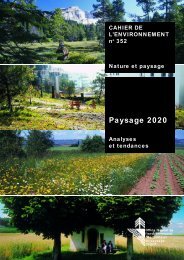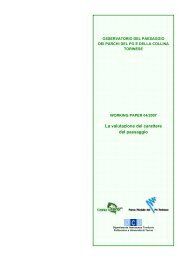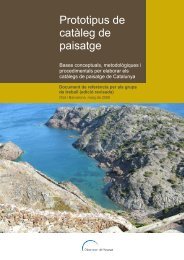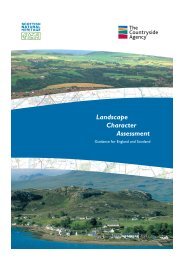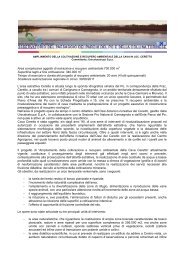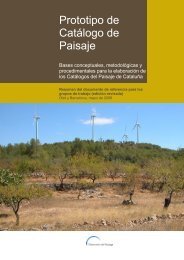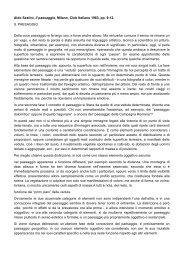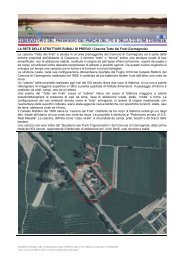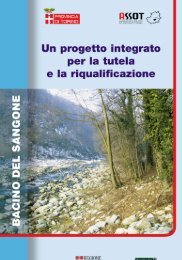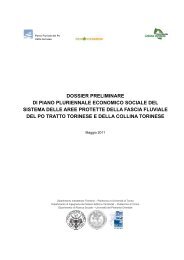Using Historic Landscape Characterisation
Using Historic Landscape Characterisation
Using Historic Landscape Characterisation
You also want an ePaper? Increase the reach of your titles
YUMPU automatically turns print PDFs into web optimized ePapers that Google loves.
<strong>Using</strong> <strong>Historic</strong> <strong>Landscape</strong> <strong>Characterisation</strong><br />
Completed<br />
Projects<br />
Projects in<br />
Progress<br />
Planned to<br />
start 2004/5<br />
Mapping<br />
the progress<br />
of English<br />
Heritage’s HLC<br />
programme at<br />
April 2004, and<br />
an extract from<br />
the Cornwall<br />
HLC map for<br />
the Bodrugan<br />
Area (right).<br />
© Cornwall<br />
County Council<br />
summarised in Part 1, and further detail<br />
is available in the report of a recent<br />
national review of the HLC method<br />
(Aldred and Fairclough, 2002). For<br />
present purposes it is sufficient to say<br />
that HLC has defined new territory in<br />
spatial historic analysis, in the scope of<br />
the terms ‘historic environment’ and<br />
‘heritage’, and in the philosophy of how<br />
the historic environment is managed.<br />
HLC should also be considered as a<br />
microcosm and an exemplar of a much<br />
wider field of historic characterisation,<br />
which is now being extended to cover<br />
complex urban areas and expansive<br />
conurbations such as the Government’s<br />
sustainable community Housing Growth<br />
and Pathfinder Areas.<br />
Since the English Heritage/local<br />
government collaboration on HLC<br />
began, all the principles of this<br />
approach (and indeed those of the<br />
Countryside Agency’s programme of<br />
<strong>Landscape</strong> Character Assessment) have<br />
been endorsed by the European<br />
<strong>Landscape</strong> Convention (ELC).<br />
See http://conventions.coe.int/treaty/<br />
EN/treaties/html/176.htm for a copy of<br />
the ELC.<br />
Published in October 2000, the<br />
Convention rapidly won widespread<br />
Anciently Enclosed Land<br />
Upland Coastal Ground<br />
Coastal Rough Ground<br />
Dunes<br />
Recently Enclosed Land<br />
Anciently Enclosed Land<br />
Altered in 18th and 19th<br />
Centuries<br />
Anciently Enclosed Land<br />
Altered in 20th Century<br />
Navigable Rivers & Creeks<br />
Steep Sided Valleys<br />
Predominantly Industrial<br />
Urban or Residential<br />
Development<br />
Ornamental<br />
Recreation<br />
Airfields and Military<br />
Upland Woods<br />
Reservoirs<br />
support; it came into force on 1 March<br />
2004 in those countries that ratified it.<br />
Like HLC, the ELC promotes landscape<br />
as a primary aspect of the common<br />
heritage, and one that requires<br />
comprehensive understanding,<br />
democratic participation and sustainable<br />
management.<br />
In England, characterisation has partly<br />
been a reaction to a changed perception<br />
of the traditional designation system.<br />
This had proved effective for fifty years<br />
in the case of buildings and one<br />
hundred years for monuments, but was<br />
coming to be seen as ineffectual for the<br />
wide historic landscape. HLC in<br />
particular is concerned with questions of<br />
how to protect and manage dynamic<br />
rural landscapes. The drawing of ‘red<br />
lines’ around parts of the historic<br />
landscape was seen to risk devaluing<br />
the areas outside of the line; most<br />
importantly, it was not clear what would<br />
be achieved other than a flagging up of<br />
interest, an objective that can be<br />
reached more directly and clearly by<br />
other methods. More than any other<br />
part of the historic environment, the<br />
landscape is characterised and enriched<br />
by centuries of change and<br />
modification. If we celebrate the result<br />
of past changes, we must logically<br />
2




